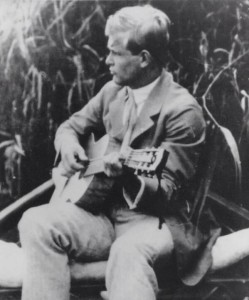My philosophy of song-leading in corporate worship so far: Maximize congregational participation.
Do so in the follow ways:
1. Moderate visibility and volume – Musicians should not be very prominent – low stage, no spotlights. Being completely hidden hinders communication though, so some visibility is preferred. Use enough amplification to be heard clearly throughout the room, but no more.
2. Clear intuitive cues – Give a predictable intro to establish the key. Crescendo into refrains to help people who are lost regain confidence. Give a big V-I resolution ending – always. Don’t make people think about finding their way through the form.
3. Moderate musical difficulty – Pick songs with a relatively narrow vocal range and adjust the key if necessary – most men are baritones, many women altos. Absolutely no ambiguous rhythms. Syncopation is fine if it’s consistent, but dangling space, especially at the end of phrases needs to be filled by instruments so the next attack is obvious.
4. Moderate lyrical difficulty – Don’t force eyes permanently to page or screen, make it within the grasp of eventual memorization……Most lines should rhyme if possible. Axe poor verses of longer songs.
5. Always adjust to context: Children, foreigners, elderly, high ratio of classically-trained singers, seminarians, small/large crowds, etc. All these things should be considered. No matter how constrained your tradition may be, there are creative adaptations that can be made to bring more people in the room along, or leave them out in the cold. Those who have shown up – do your best to draw them in.
(In case your wondering, the photo is of Dietrich Bonhoeffer playing the guitar.)

